 Gloria Grahame is a bad mamma scamma. 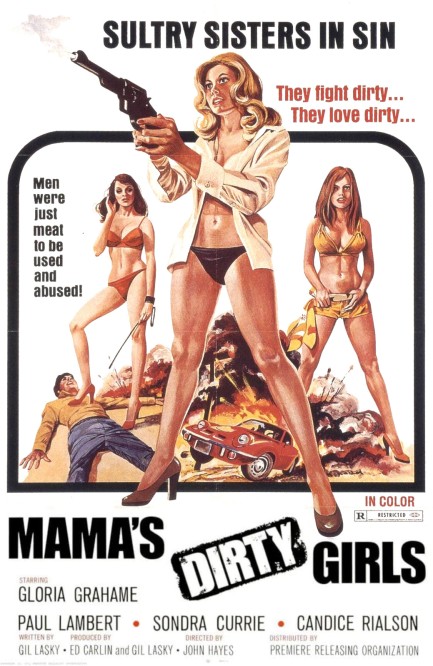
We had to watch Mama's Dirty Girls, not because it's a 1970's grindhouse movie (though that helped), but because none other than 1950s femme fatale Gloria Grahame got snared in this low budget affair. Sometimes the bills simply need to be paid. Or maybe she thought the script was dynamite. Either way, she gets top billing in this drive-in quality drama that premiered today in 1974, which tells the story of a scam artist mother and her three daughters who are honeytrap serial killers dispatching men for their money.
When Grahame gets another rich man on the hook, she foolishly poses as a well-to-do widow without realizing that her target is likewise seeking to kill someone for their money. This twist is ironic, and the mutual murder attempts that follow can be read as black comedy if you peer deeply between the lines, but in our opinion Mama's Dirty Girls doesn't have enough brainpower to be satire. Grahame probably wished it were, though—then she'd have had an excuse for starring in it. Sadly, it's just an amusingly bad movie. Everyone is terrible in it—even Grahame. And there isn't near enough eroticism to save it.
But you may want to watch it anyway. The cast is beautiful, particularly Currie, and there's an interesting value-added co-star too. Fifteen minutes into the movie's running time you'll see an actress that'll make you go, “Who is that?” You'll be reacting to the radiant beauty of bit player Annika Di Lorenzo, née Marjorie Lee Thoreson, who was a Penthouse centerfold in 1973 and later carved out a career in b-cinema. Besides Mama's Dirty Girls she appeared in such films as 1974's Act of Vengeance and The Centerfold Girls, 1980's Dressed To Kill, and 1979's big budget porn epic Caligula.
She later sued Penthouse publisher Bob Guccione, claiming that he forced her to have sex with business associates, and tricked her into the infamous Caligula orgy. She won a $4 million punitive judgement, but lost it in an appeal. Guccione took revenge by publishing a lesbian pictorial of Di Lorenzo. Afterward, she stepped away from the limelight, but in 2011 hit newspapers again when she washed up dead on Camp Pendleton Beach in San Diego under baffling circumstances. Police suggested suicide, but her family contended that it was foul play, possibly perpetrated by someone from the military base. In the end, her case was closed as unsolved, and today remains another Hollywood mystery. 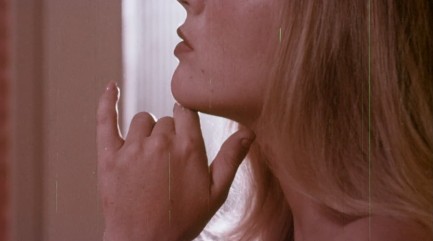 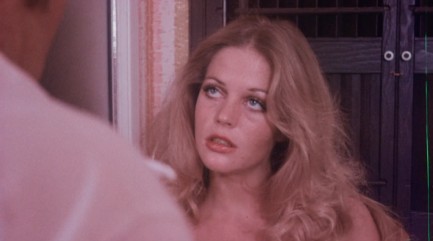 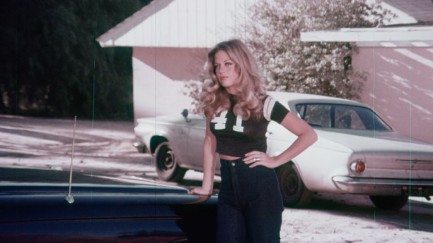 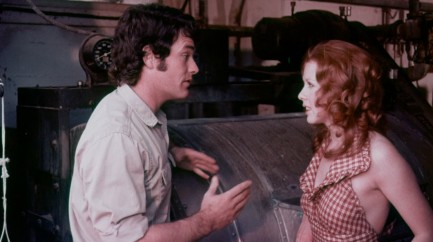 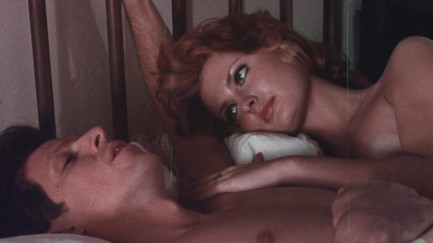 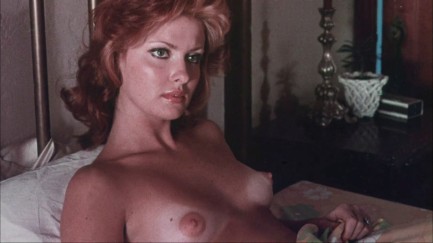 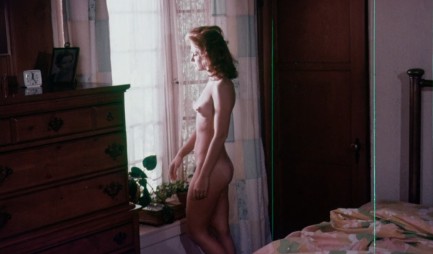 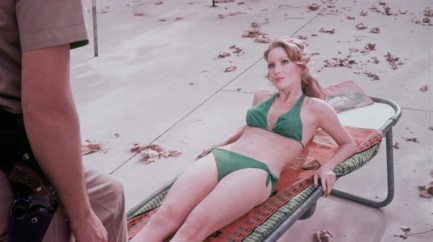 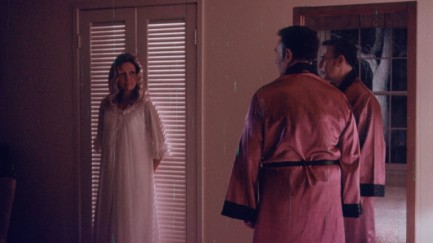 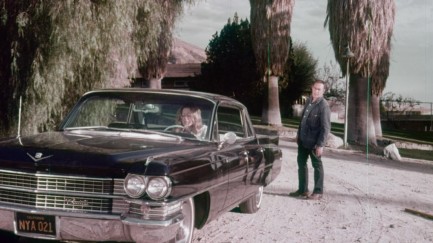 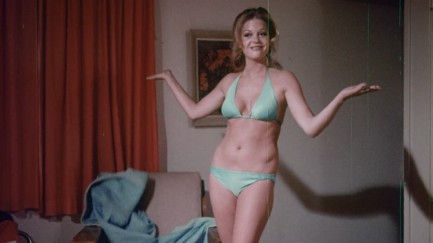  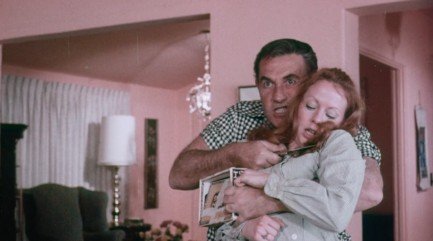 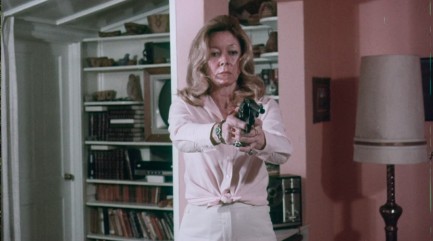 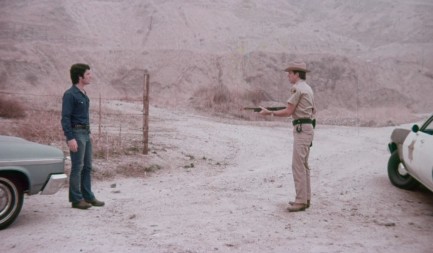
 Movie stars were always willing to give each other a hand. 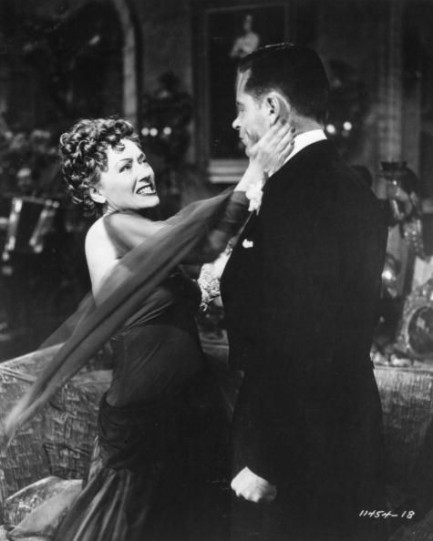
Once again we've been struck, so to speak, by the sheer number of cinema promo images featuring actors and actresses pretending to slap each other. They just keep turning up. The above shot is more about the neck than the face, but it still counts, as Gloria Swanson slaps William Holden in 1950's Sunset Boulevard. Below we have a bunch more, and you can see our previous collection at this link. Since we already discussed this phenomenon we won't get into it again, except briefly as follows: pretend slaps, film is not reality, and everyone should try to remember the difference. Many slaps below for your interest and wonder. 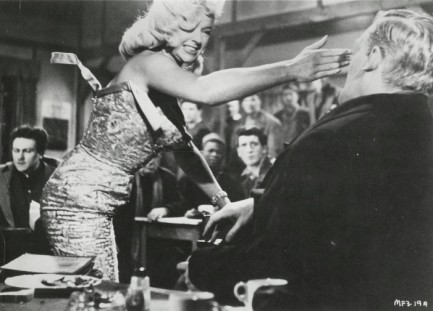 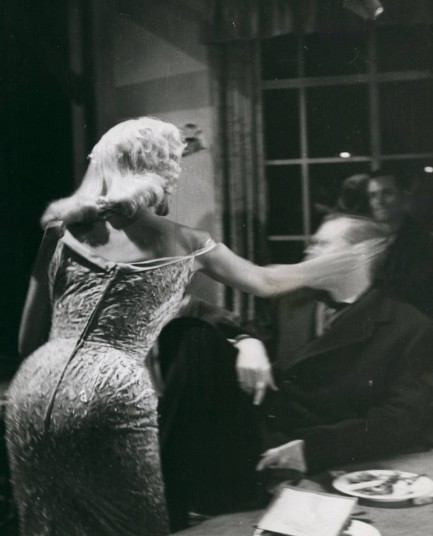 Diana Dors smacks Patrick Allen blurry in 1957's The Long Haul. Diana Dors smacks Patrick Allen blurry in 1957's The Long Haul.
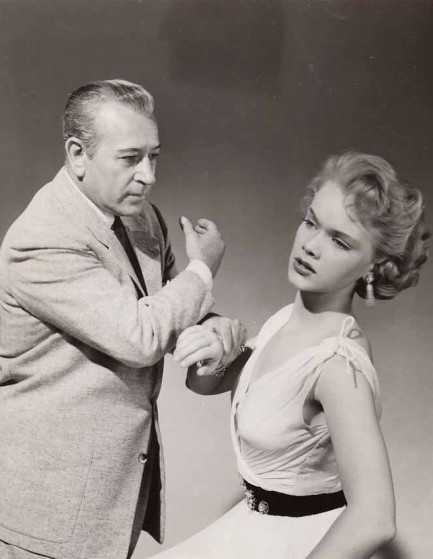 Mob boss George Raft menaces Anne Francis in a promo image made for 1954's Rogue Cop. Mob boss George Raft menaces Anne Francis in a promo image made for 1954's Rogue Cop.
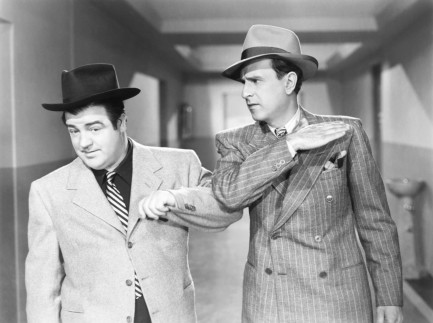 Bud Abbott gets aggressive with Lou Costello in 1945's Here Come the Co-Eds. Bud Abbott gets aggressive with Lou Costello in 1945's Here Come the Co-Eds.
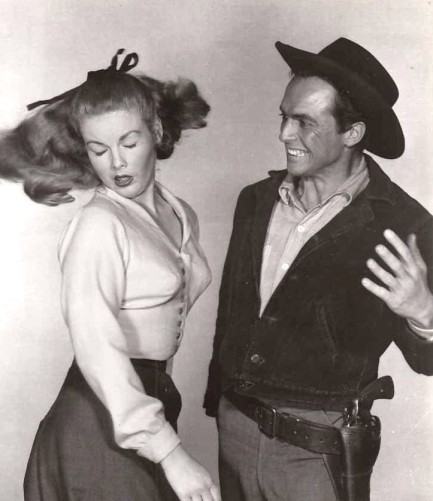 Jo Morrow takes one from black hat Jack Hogan in 1959's The Legend of Tom Dooley. Jo Morrow takes one from black hat Jack Hogan in 1959's The Legend of Tom Dooley.
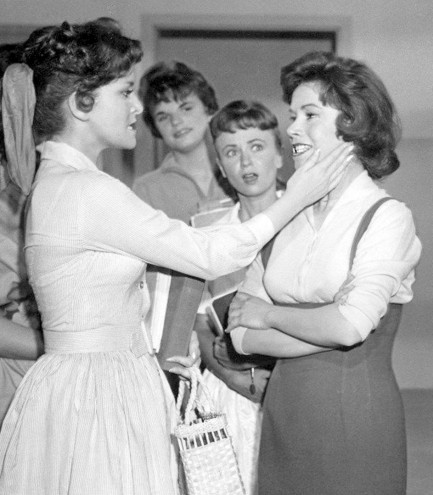 Chris Robinson and Anita Sands get a couple of things straight about who's on the yearbook committee in Diary of High School Bride. Chris Robinson and Anita Sands get a couple of things straight about who's on the yearbook committee in Diary of High School Bride.
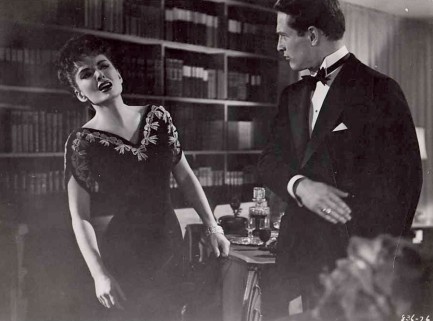 Paul Newman and Ann Blyth agree to disagree in 1957's The Helen Morgan Story. Paul Newman and Ann Blyth agree to disagree in 1957's The Helen Morgan Story.
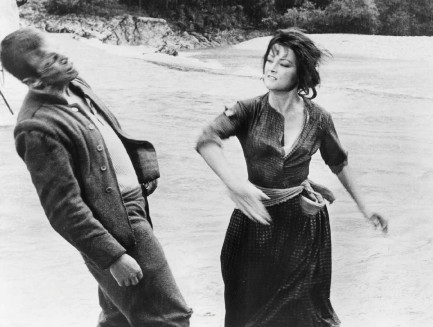 Verna Lisi shows Umberto Orsini who gives the orders in the 1967 film La ragazza e il generale, aka The Girl and the General. Verna Lisi shows Umberto Orsini who gives the orders in the 1967 film La ragazza e il generale, aka The Girl and the General.
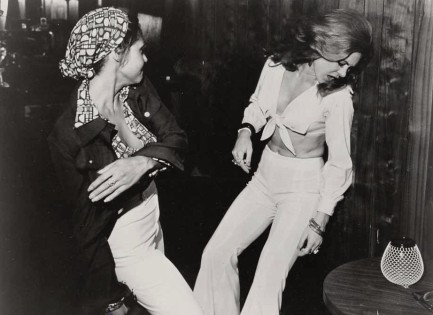 What the fuck did you just call me? Marki Bey slaps Betty Anne Rees loopy in the 1974 horror flick Sugar Hill. What the fuck did you just call me? Marki Bey slaps Betty Anne Rees loopy in the 1974 horror flick Sugar Hill.
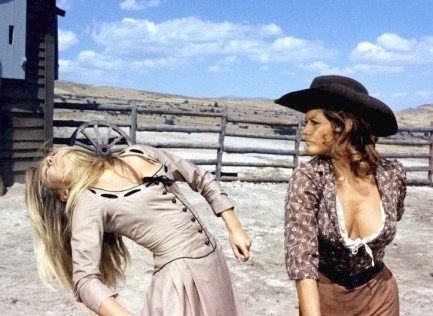 Claudia Cardinale slaps (or maybe punches—we can't remember) Brigitte Bardot in the 1971 western Les pétroleuses, known in English for some reason as The Legend of Frenchie King. Claudia Cardinale slaps (or maybe punches—we can't remember) Brigitte Bardot in the 1971 western Les pétroleuses, known in English for some reason as The Legend of Frenchie King.
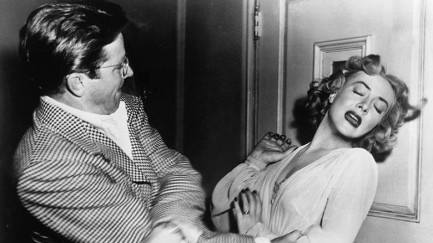 Audrey Totter reels under the attentions of Richard Basehart in 1949 Tension. We're thinking it was probably even more tense after this moment. Audrey Totter reels under the attentions of Richard Basehart in 1949 Tension. We're thinking it was probably even more tense after this moment.
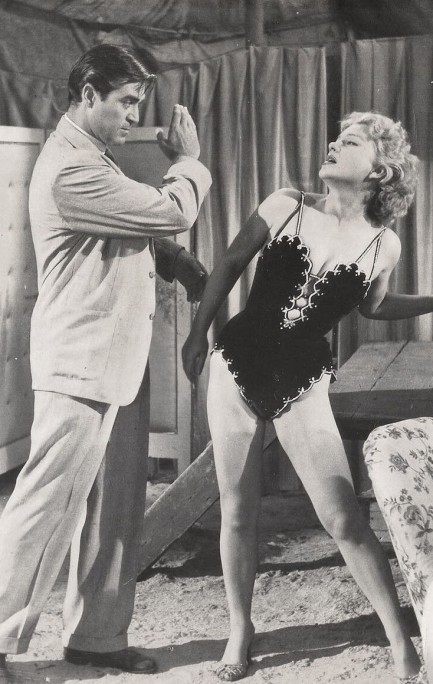 Anne Baxter tries to no avail to avoid a slap from heel Steve Cochran in 1954's Carnival Story. Anne Baxter tries to no avail to avoid a slap from heel Steve Cochran in 1954's Carnival Story.
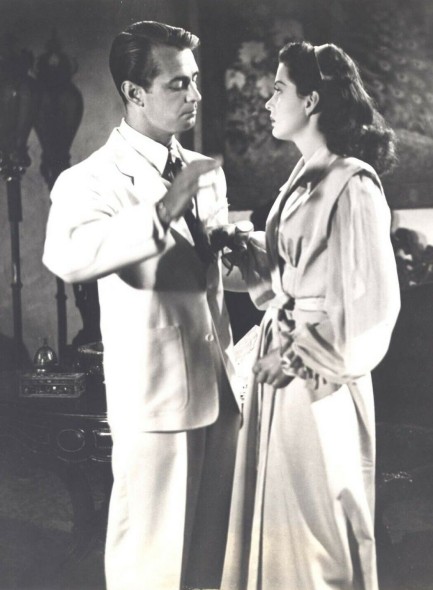 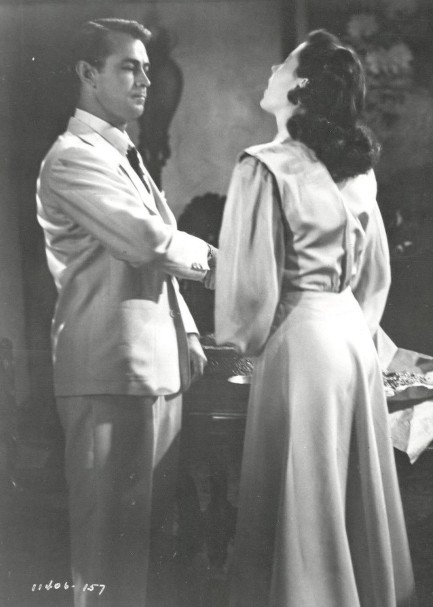 Though Alan Ladd was a little guy who Gail Russell probably could have roughed up if she wanted, the script called for him to slap her, and he obeyed in the 1946 adventure Calcutta. Though Alan Ladd was a little guy who Gail Russell probably could have roughed up if she wanted, the script called for him to slap her, and he obeyed in the 1946 adventure Calcutta.
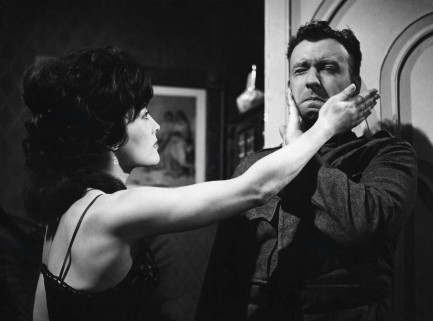 Peter Alexander guards his right cheek, therefore Hannelore Auer crosses him up and attacks his left in 1964's Schwejk's Flegeljahre, aka Schweik's Years of Indiscretion. Peter Alexander guards his right cheek, therefore Hannelore Auer crosses him up and attacks his left in 1964's Schwejk's Flegeljahre, aka Schweik's Years of Indiscretion.
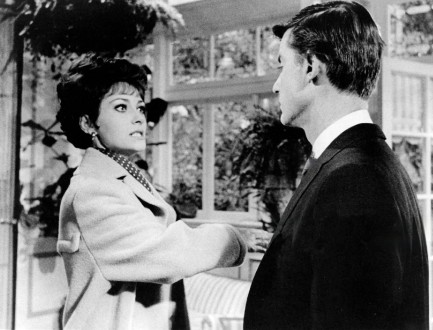 Elizabeth Ashley gives Roddy McDowall a facial in in 1965's The Third Day. Elizabeth Ashley gives Roddy McDowall a facial in in 1965's The Third Day.
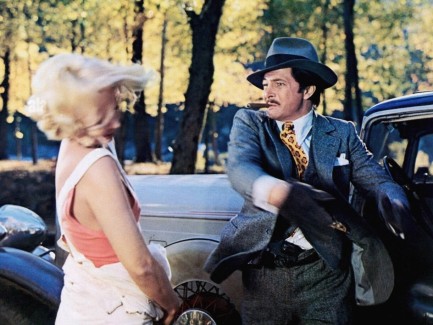 Tony Anthony slaps Lucretia Love in 1972's Piazza pulita, aka Pete, Pearl and the Pole. Tony Anthony slaps Lucretia Love in 1972's Piazza pulita, aka Pete, Pearl and the Pole. 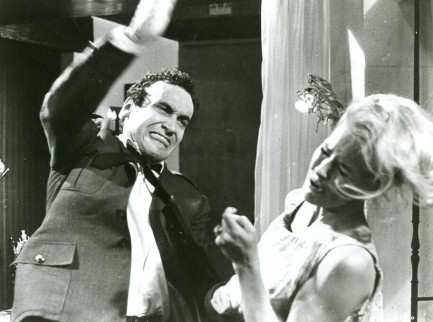 André Oumansky goes backhand on Lola Albright in 1964's Joy House. André Oumansky goes backhand on Lola Albright in 1964's Joy House.
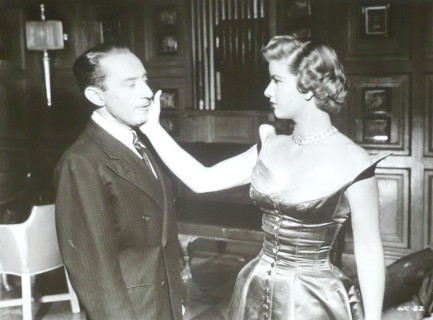 Frank Ferguson catches one from Barbara Bel Geddes in the 1949 drama Caught. Frank Ferguson catches one from Barbara Bel Geddes in the 1949 drama Caught.
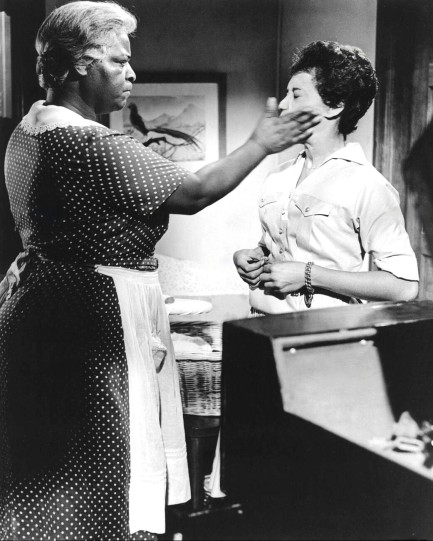 This looks like a real slap, so you have to credit the actresses for their commitment. It's from 1961's Raisin in the Sun and shows Claudia McNeil rearranging the face of Diana Sands. This looks like a real slap, so you have to credit the actresses for their commitment. It's from 1961's Raisin in the Sun and shows Claudia McNeil rearranging the face of Diana Sands.
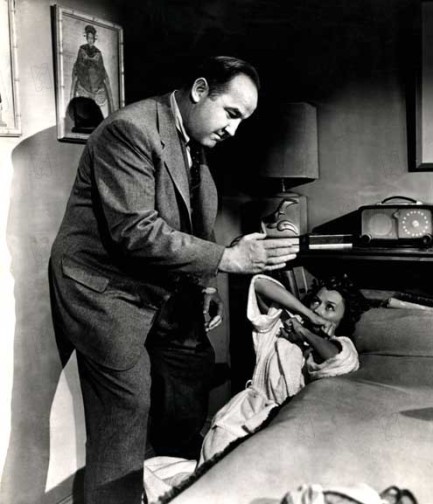 Gloria Grahame finds herself cornered by Broderick Crawford in 1954's Human Desire. Gloria Grahame finds herself cornered by Broderick Crawford in 1954's Human Desire.
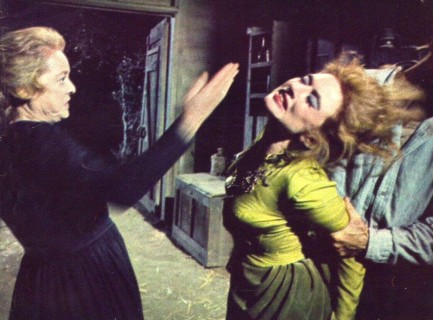 Bette Davis, an experienced slapper and slappee, gets a little assistance from an unidentified third party as she goes Old West on Amanda Blake in a 1966 episode of Gunsmoke called “The Jailer.” Bette Davis, an experienced slapper and slappee, gets a little assistance from an unidentified third party as she goes Old West on Amanda Blake in a 1966 episode of Gunsmoke called “The Jailer.”
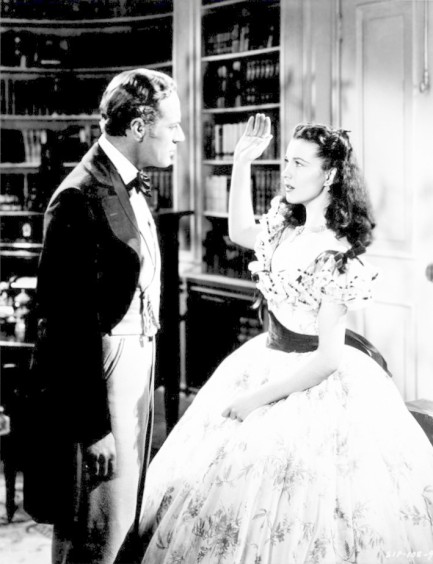 There are a few slaps in 1939's Gone with the Wind, so we had our pick. We went with Vivien Leigh and Leslie Howard. There are a few slaps in 1939's Gone with the Wind, so we had our pick. We went with Vivien Leigh and Leslie Howard.
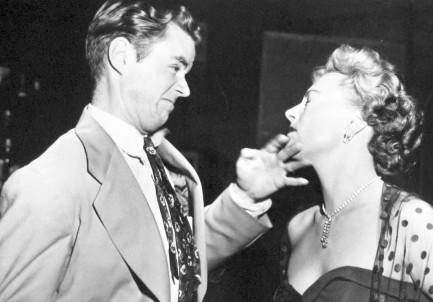 Virginia Field takes one on the chin from Marshall Thompson in Dial 1119. Virginia Field takes one on the chin from Marshall Thompson in Dial 1119.
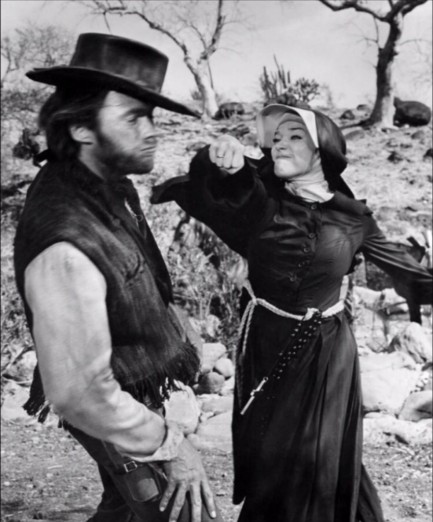 Clint Eastwood absorbs a right cross from nun Shirley MacLaine in 1970's Two Mules for Sister Sara. Clint Eastwood absorbs a right cross from nun Shirley MacLaine in 1970's Two Mules for Sister Sara.
 Even Powell and Loy's legendary act was bound to get tired eventually. 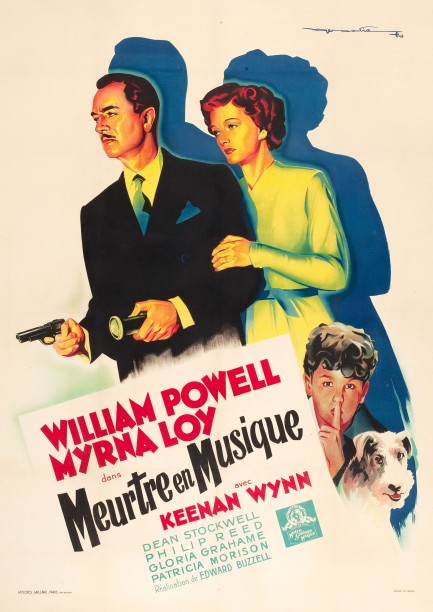
There's nice Roger Soubie art on this French poster for Song of the Thin Man, the last of six movies in the Thin Man series, which premiered in the U.S. in 1947 and reached France today in 1948. After six sessions the concept might seem a little worn to some viewers, but it still has William Powell and Myrna Loy as the leads. The mystery involves the death of an orchestra musician and the search for a missing bandleader, which leads to Powell and Loy exploring New York City's jazz underground. It's an all-white underground spread across various clubs, gambling boats, and parties, populated by at least fifty musicians, none of them of color. Of all the sight gags in the movie, the barring of black musicians from a film revolving around the art form they invented is the most notable one of all, but that's mid-century moviemaking for you.
The jazz gimmick is useful anyway, because it gives the filmmakers the opportunity to have Powell—as upper class supersleuth Nick Charles—play the role of a fish out of water. He understands neither the hipster jazzcats nor their customs and slang, and in about half a decade probably turns into the white-haired bartender from The Wild One. Even so, he needs to find and unmask a murderer in order to free a wrongly accused acquaintance from police custody. In true Thin Man fashion, he quips his way through the proceedings, plays cagey with femmes fatales Marie Windsor and Gloria Grahame, and finally unveils the killer in a nightclub populated by all the suspects. Loy is reliable as always in the sidekick role, and even amusingly picks up a few words of hep lingo.
While Dashiell Hammett originated the two characters of Nick and Nora Charles, he didn't touch Song of the Thin Man. Instead it was written by veteran crime novelist Steve Fisher and comedy writer Nat Perrin. Their union, unlike Nick and Nora's marriage, is an uneasy pairing, though it's hard to put a finger on what exactly is wrong. The mystery has an interesting backdrop, but is never compelling, while the humor seems clunkier than in the past. Powell and Loy do their best, but the movie failed to earn back its production budget, and the franchise came to an end. There were screenwriting and production issues, but we suspect that the real culprit was simple boredom—slayer of movie series and marriages alike. Audiences had simply moved on. World War, generational cynicism, and the emergence of grittier cinema will tend to cause that. Song of the Thin Man premiered today in 1947.
 Two tough guys plus one Gloria Grahame add up to minus one tough guy. 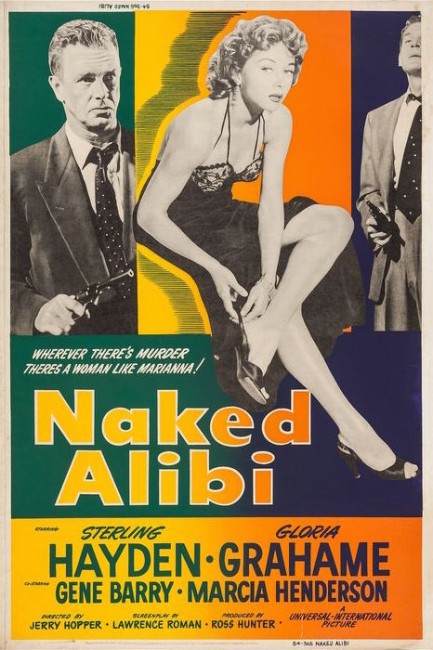
This rare promo for the film noir Naked Alibi shows Gloria Grahame caught between mortal enemies Sterling Hayden and Gene Barry. The movie premiered in the U.S. today in 1954. We talked about it last year. Shorter version: b movie tries hard but could b better.
 Who needs a good script when you have Mitchum and Russell? 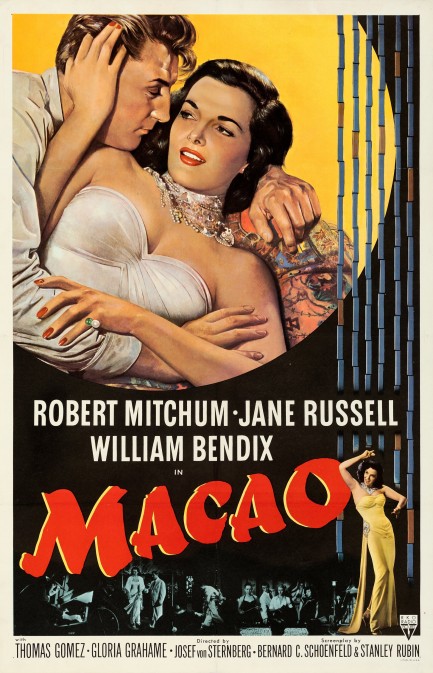
Above is a surpassingly lovely poster for the thriller Macao with Robert Mitchum and Jane Russell, reunited by RKO Studios after the previous year's His Kind of Woman. It's always interesting how old movies introduce the romantic leads to each other. In filmmaking parlance, these encounters are sometimes called “meet-cutes.” But it isn't very cute for the man to have to save the woman from a sexual assault. It's also not cute when the price for being saved is an uninvited kiss, but this is the early fifties and in movies you have to expect that stuff. Nonconsensual wrestling match—bad. Nonconsensual kiss—okay. Mitchum goes in for his reward and Russell doesn't mind.
We joked about these two being the best looking pair you can find in vintage cinema, and they're both in top form here. The honchos at RKO knew they had a dream pairing. Placing them in an exotic port, giving them an obstacle to overcome, writing them some quips, and hiring a respected director like Josef von Sternberg and charging him with capturing Casbalanca-style magic was a no-brainer. The adventure involves Mitchum coming across a stolen diamond, then trying to sell more gems to a local criminal kingpin. Little does he know that it's all a scheme hatched by an American police lieutenant to capture said kingpin, leaving Mitchum stuck in the dangerous middle. Russell plays a lounge singer and seems ancillary to all the intrigue, but as the plot evolves she becomes central to the caper.
Macao has its moments, and we certainly enjoyed it, but objectively speaking it's a middling effort, with too many narrative holes and too much boilerplate dialogue to offer any real thrills. The caper isn't compelling, and the villain—played by Brad Dexter as if he's on Quaaludes—has no real sense of menace. So the movie has the exotic port, the obstacle, and the quips—but no magic. Mitchum gets the girl, though, so that's something. Or maybe Russell gets the boy. However you prefer. What we'd prefer is more of this pairing, but sadly this was the last time the two starred together. While both their collaborations are watchable, they never made the blockbuster their onscreen chemistry deserved. Why not? Probably because Macao flopped so hard. It premiered in the U.S. today in 1952.
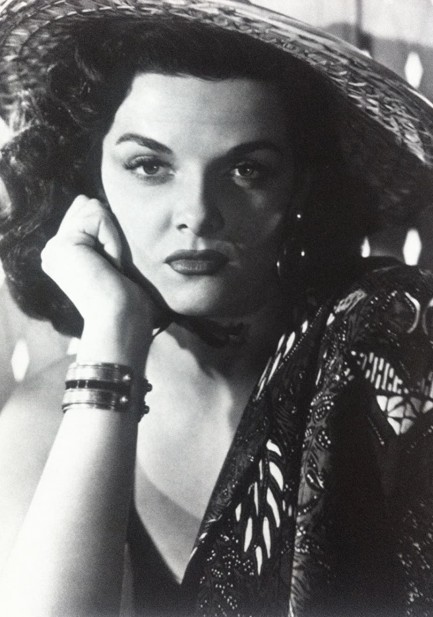 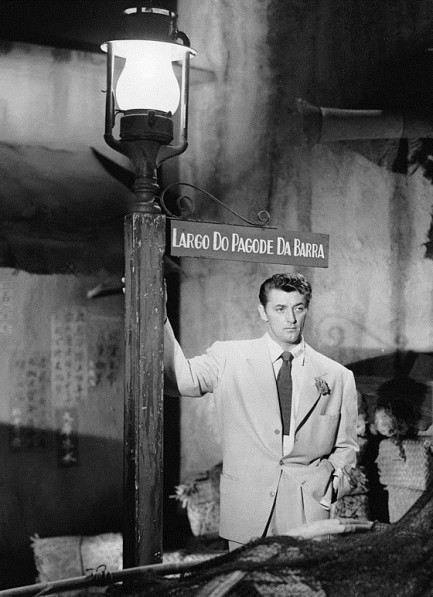 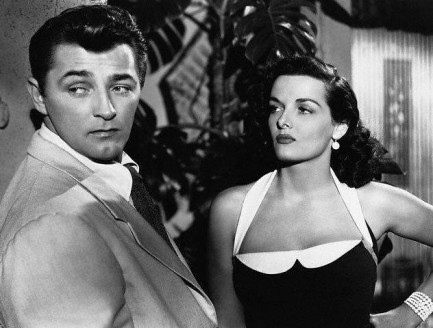 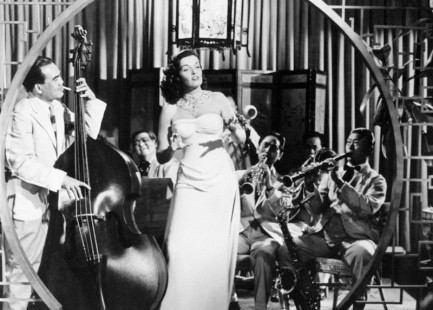 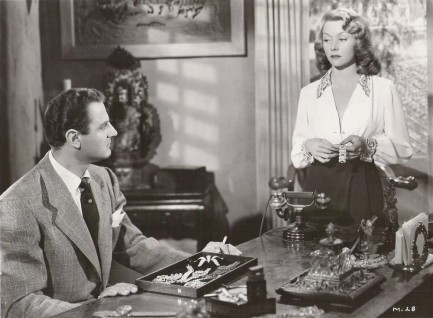 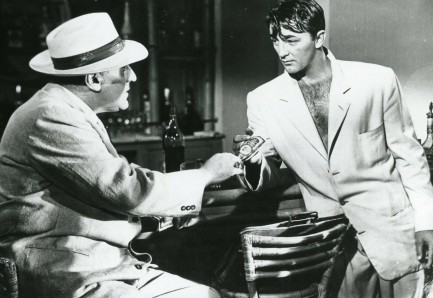 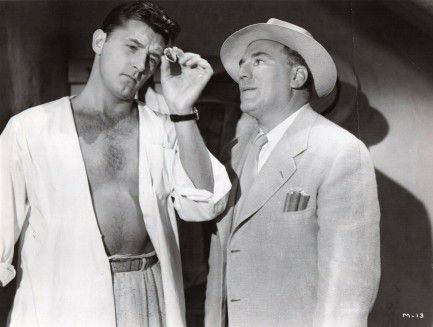 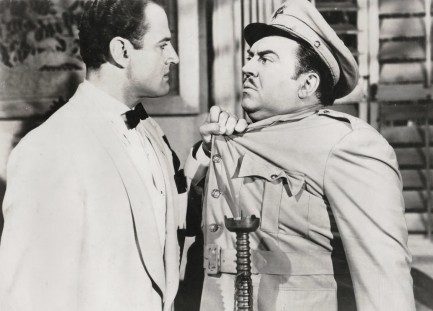 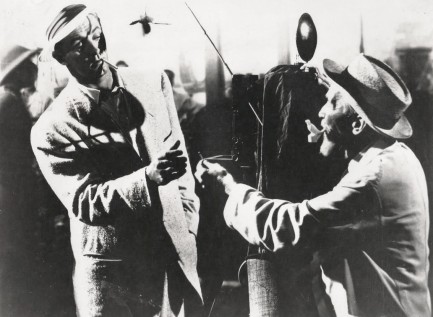 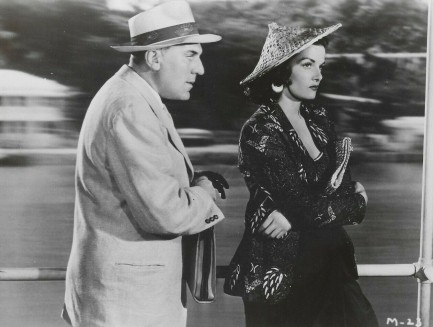  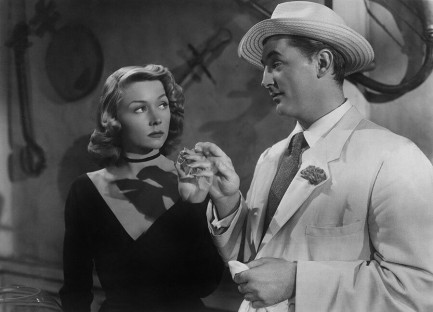 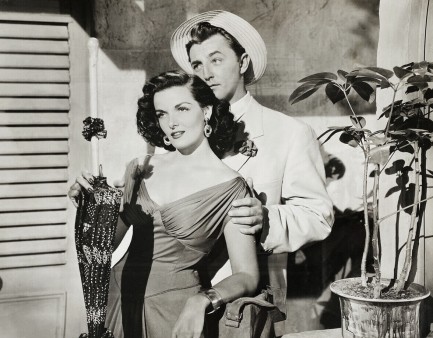 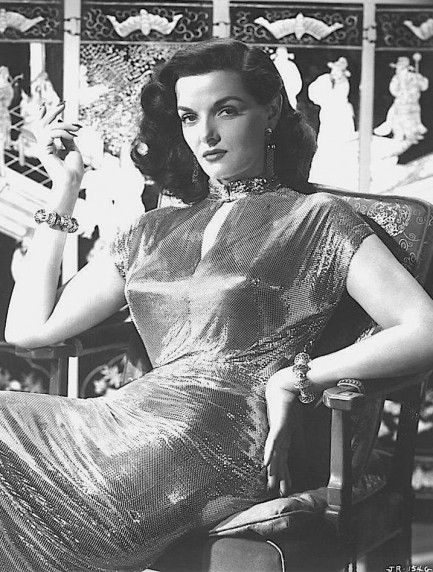 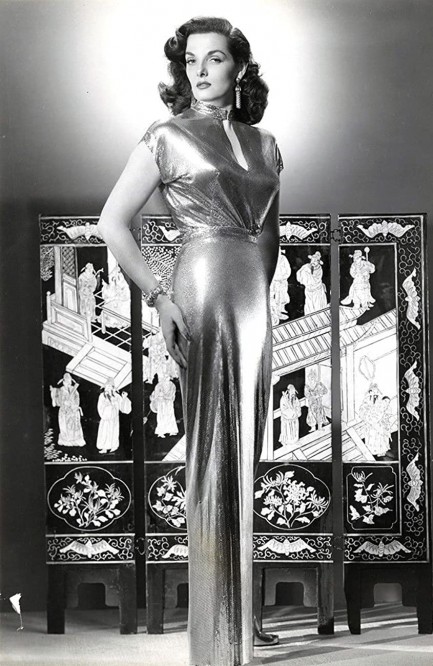 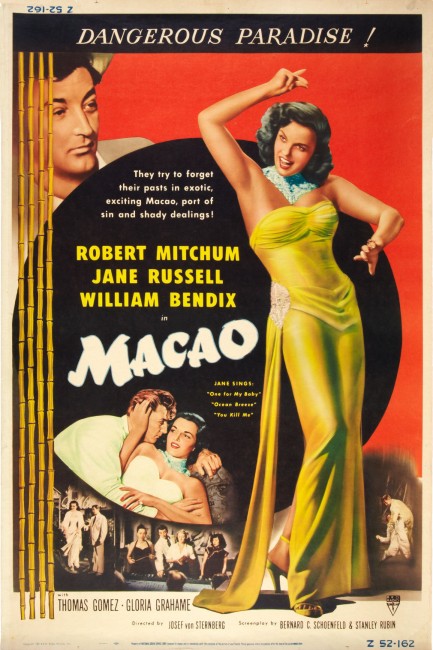
 Glenn Ford, Lee Marvin, and Gloria Grahame raise the temperature in Italy. 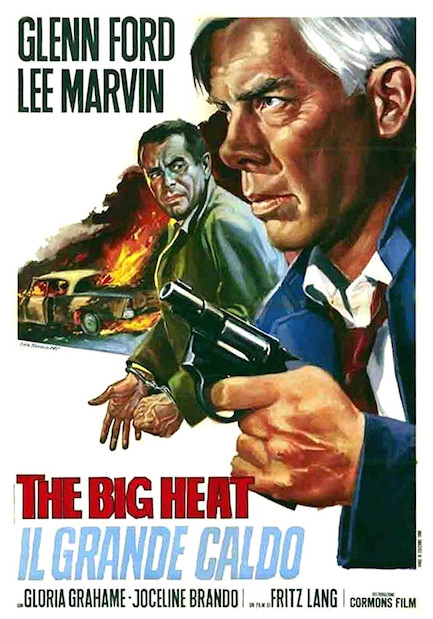 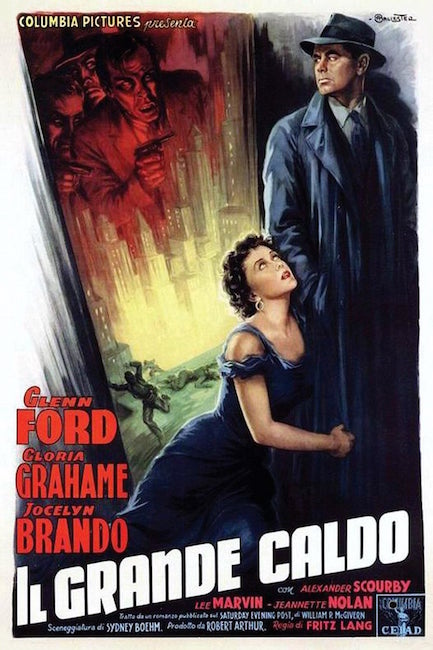 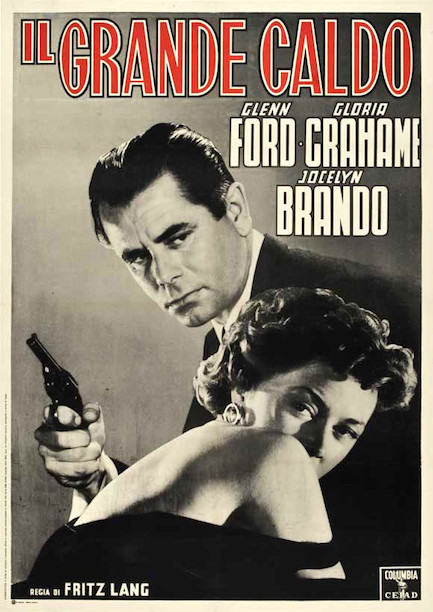
Above, three Italian posters for Il grande caldo, better known as The Big Heat. The top piece was painted by Ezio Tarantelli, and the middle one is by Anselmo Ballester, both of whom we featured a while back, here and here. We already talked about the film. If you haven't watched it, try to make the time. It's good.
 The temperature rises and the bodies fall in Fritz Lang's tense film noir. 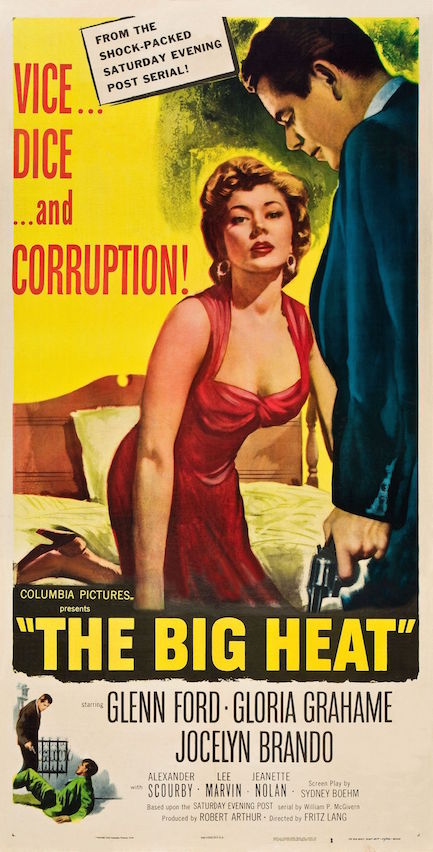
In the thriller The Big Heat, which is based on a novel by William P. McGivern and directed by Fritz Lang, Glenn Ford plays one of the toughest men you'll find in film noir—ass kicking detective Dave Bannon, whose clash with organized crime sends him down a rogue path that leaves people battered, bruised, bloodied, burnt, and blown up. He co-starred with Gloria Grahame, and the way the plot develops, she turns out to be every bit as tough. We can't tell you anything about the movie others already haven't about a thousand times, so we're focusing instead on this top notch promo poster, a framable classic in the panel format we love. You'll see this online only occasionally because it's way too rare for sellers to ever have in stock, but it's a fitting piece for such a great movie. The Big Heat premiered in the U.S. today in 1953. 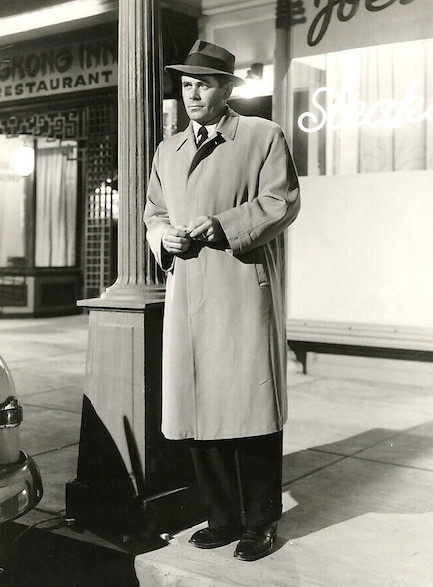 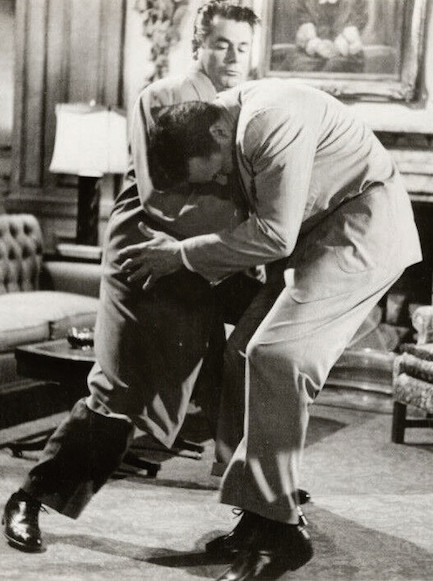 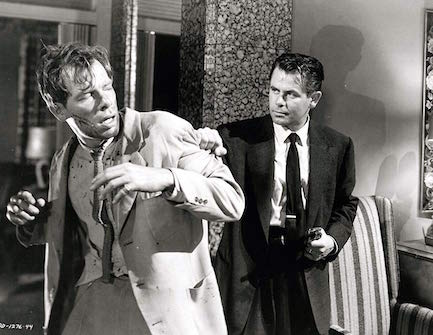 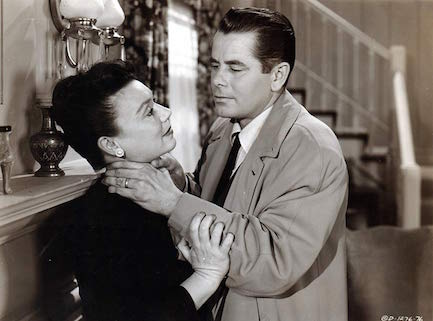 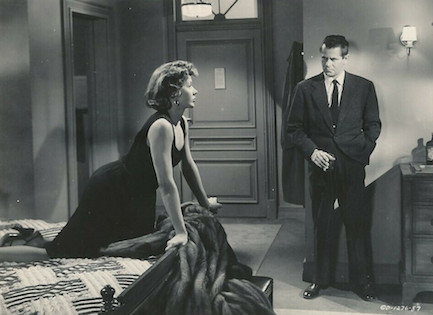 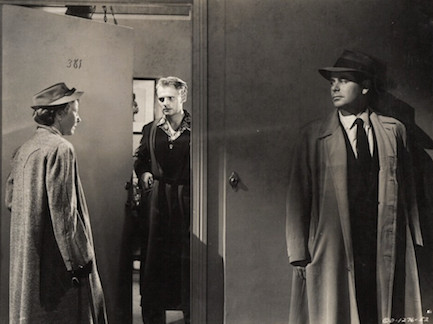 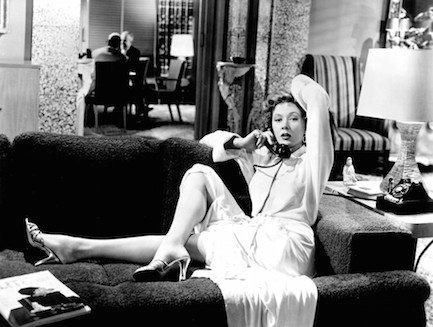 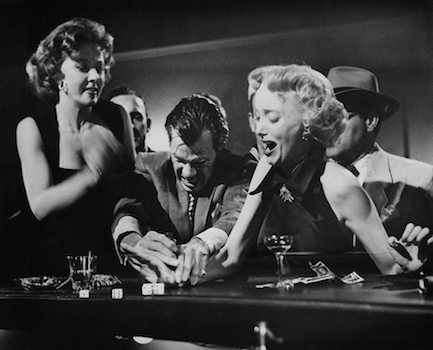 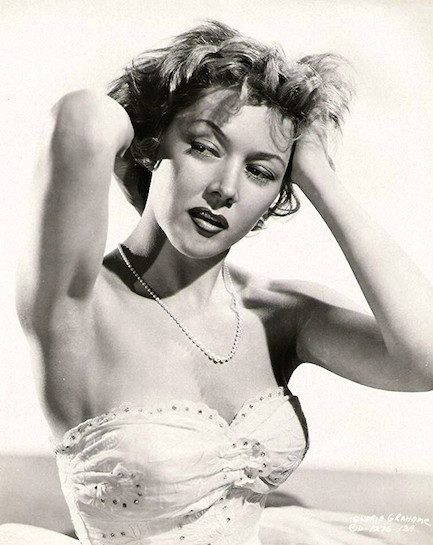 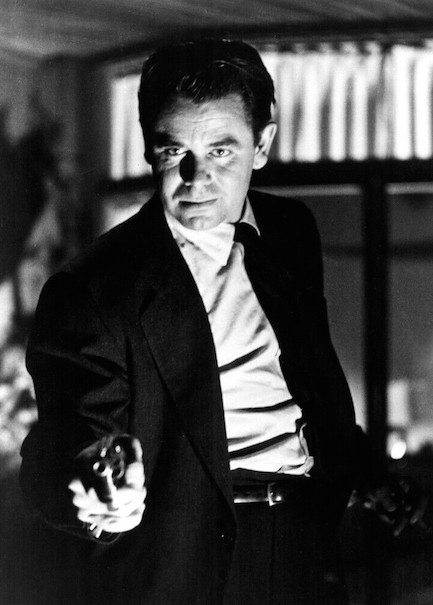
 Good thing they were both professional actors. They could act like this wasn't weird. 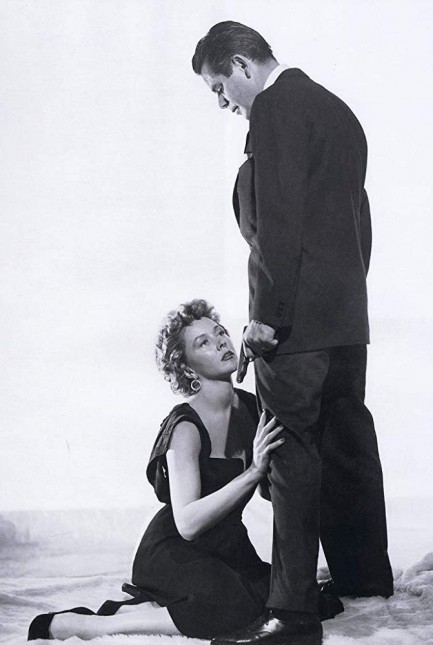
We have a feeling this promo image of Glenn Ford and Gloria Grahame made for their 1953 film noir The Big Heat never got published. Handout photos such as these were provided by studios—in this case Columbia Pictures—to the press for usage when writing about various movies, but what newspaper or magazine would have used this? It's beyond provocative for back then, and in fact its bizarre, coercive feel would make the internet explode even today, were any two stars to pose in this way. Amazingly, promos for vintage thrillers often featured female stars sitting or kneeling within phallus range. In fact, we've seen enough to consider putting together a collection. We'll give that some thought while you glance at another example we shared a while ago.
 Gloria Grahame's three-step plan for dealing with a problem—aim, fire, assess. 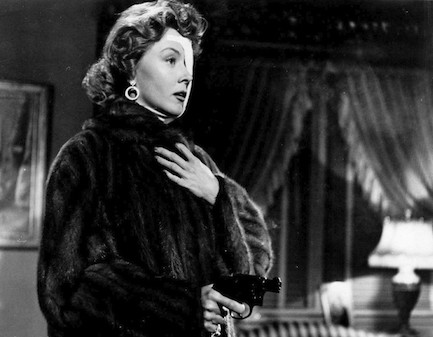 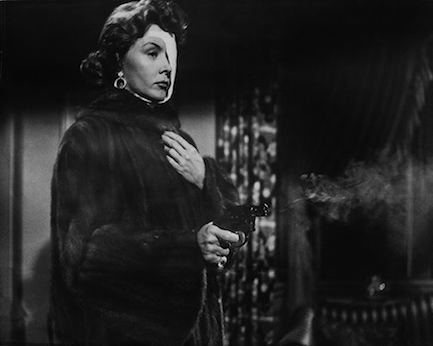 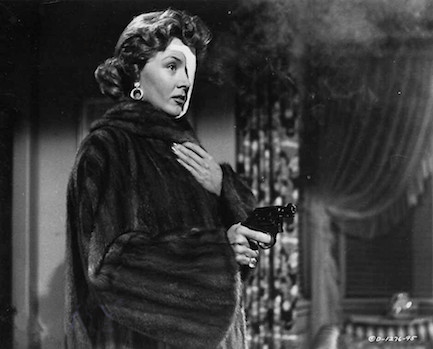
These photos of U.S. actress Gloria Grahame come from one of our favorite old movies, the film noir The Big Heat, in which she starred with Glenn Ford. How many good films was Grahame in? Plenty, including The Bad and the Beautiful, Crossfire, the amazing In a Lonely Place, Human Desire, The Glass Wall, and Odds Against Tomorrow. Outside the drama/noir genres, she was also in It's a Wonderful Life, which is one of the most watched U.S. films of all time, and Oklahoma!. In The Big Heat she plays the prototypical film noir bad girl who wants to be good but has a hard time getting there. We won't say more. Just check it out. The photo is from 1953.
 They'll have to choose what they hate more—their circumstances or each other. 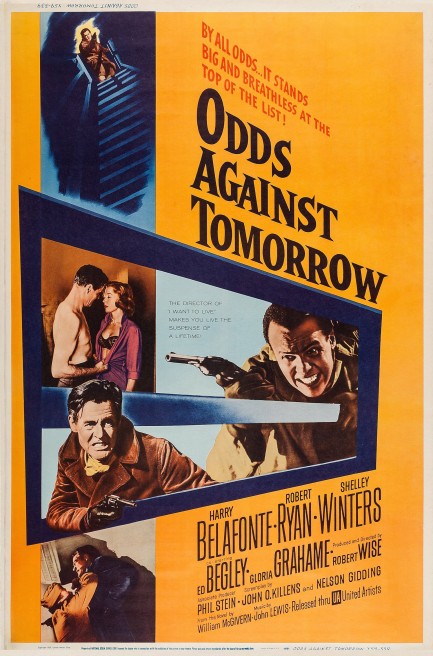
The Noir City Film Festival rolls on with Robert Wise's 1959 thriller Odds Against Tomorrow. Harry Belafonte and Robert Ryan star in a heist story that brings a touch of underground jazz and an edge of racial tension to the narrative mix. It would play nicely on a double bill with In the Heat of the Night, but fits at Noir City too. In fact it might be the darkest film noir on the bill. Belafonte is in debt to mobsters and Ryan is broke and feels emasculated being supported by his girlfriend. When ex-cop Ed Begley brings the two together for a lucrative robbery both see it as the only answer. The robbery has the same problems associated with any heist, with the added complication of Ryan's racism.
Some reviews of this film try to suggest equivalence between these two characters. Uh, no. Belafonte's separatist leanings and distrust of whites in a society that is unfair toward him is a precaution; Ryan's separatist leanings and distrust of blacks in a society that favors him is oppression. This is a basic sociological truth as it relates to power in any society, and it's irksome that some reviewers miss this. Belafonte responds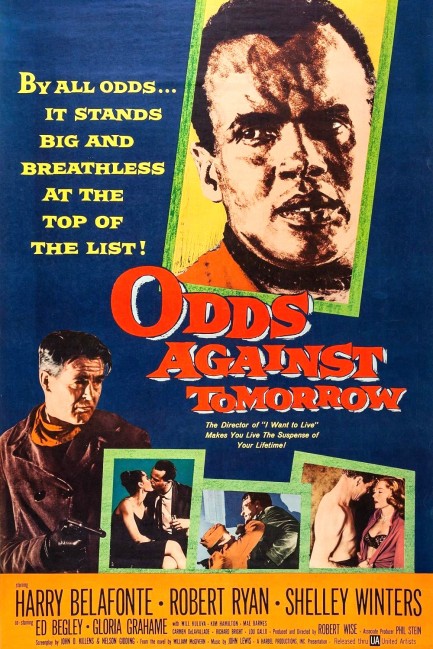 to aggressive hate with reactive hate. The expectation that he possess superhuman forbearance while his oppressor can be merely human removes context and wrongly demands that everybody behave identically despite their different circumstances and different locations within the spectrum of power. to aggressive hate with reactive hate. The expectation that he possess superhuman forbearance while his oppressor can be merely human removes context and wrongly demands that everybody behave identically despite their different circumstances and different locations within the spectrum of power.
Much of the movie examines Belafonte's and Ryan's respective attitudes along these lines, with the heist coming in a flurry of action at the end. The robbery is basically foolproof, but only if the powder keg of racial resentment doesn't blow it sky high. The points Wise is making here, which originate with William P. McGivern's novel, are simply these: cooperate and succeed, or fight and fail. All Ryan needs to do is extend the hand of respect, but because of his prejudice he fails again and again, which hardens Belafonte's already suspicious attitudes. Who do these two hate more—their circumstances or each other? That's what Odds Against Tomorrow asks, about its characters, and America. Noir City festivalgoers will leave the cinema talking about this one. 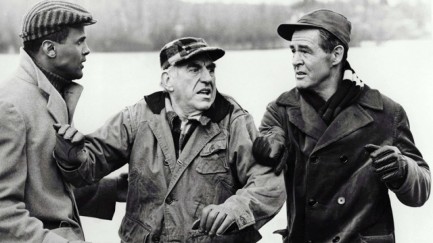

|
 |

The headlines that mattered yesteryear.
2003—Hope Dies
Film legend Bob Hope dies of pneumonia two months after celebrating his 100th birthday. 1945—Churchill Given the Sack
In spite of admiring Winston Churchill as a great wartime leader, Britons elect
Clement Attlee the nation's new prime minister in a sweeping victory for the Labour Party over the Conservatives. 1952—Evita Peron Dies
Eva Duarte de Peron, aka Evita, wife of the president of the Argentine Republic, dies from cancer at age 33. Evita had brought the working classes into a position of political power never witnessed before, but was hated by the nation's powerful military class. She is lain to rest in Milan, Italy in a secret grave under a nun's name, but is eventually returned to Argentina for reburial beside her husband in 1974. 1943—Mussolini Calls It Quits
Italian dictator Benito Mussolini steps down as head of the armed forces and the government. It soon becomes clear that Il Duce did not relinquish power voluntarily, but was forced to resign after former Fascist colleagues turned against him. He is later installed by Germany as leader of the Italian Social Republic in the north of the country, but is killed by partisans in 1945.
|

|
|

It's easy. We have an uploader that makes it a snap. Use it to submit your art, text, header, and subhead. Your post can be funny, serious, or anything in between, as long as it's vintage pulp. You'll get a byline and experience the fleeting pride of free authorship. We'll edit your post for typos, but the rest is up to you. Click here to give us your best shot.

|
|




















 Diana Dors smacks Patrick Allen blurry in 1957's The Long Haul.
Diana Dors smacks Patrick Allen blurry in 1957's The Long Haul. Mob boss George Raft menaces Anne Francis in a promo image made for 1954's Rogue Cop.
Mob boss George Raft menaces Anne Francis in a promo image made for 1954's Rogue Cop. Bud Abbott gets aggressive with Lou Costello in 1945's Here Come the Co-Eds.
Bud Abbott gets aggressive with Lou Costello in 1945's Here Come the Co-Eds. Jo Morrow takes one from black hat Jack Hogan in 1959's The Legend of Tom Dooley.
Jo Morrow takes one from black hat Jack Hogan in 1959's The Legend of Tom Dooley. Chris Robinson and Anita Sands get a couple of things straight about who's on the yearbook committee in Diary of High School Bride.
Chris Robinson and Anita Sands get a couple of things straight about who's on the yearbook committee in Diary of High School Bride. Paul Newman and Ann Blyth agree to disagree in 1957's The Helen Morgan Story.
Paul Newman and Ann Blyth agree to disagree in 1957's The Helen Morgan Story. Verna Lisi shows Umberto Orsini who gives the orders in the 1967 film La ragazza e il generale, aka The Girl and the General.
Verna Lisi shows Umberto Orsini who gives the orders in the 1967 film La ragazza e il generale, aka The Girl and the General. What the fuck did you just call me? Marki Bey slaps Betty Anne Rees loopy in the 1974 horror flick Sugar Hill.
What the fuck did you just call me? Marki Bey slaps Betty Anne Rees loopy in the 1974 horror flick Sugar Hill. Claudia Cardinale slaps (or maybe punches—we can't remember) Brigitte Bardot in the 1971 western Les pétroleuses, known in English for some reason as The Legend of Frenchie King.
Claudia Cardinale slaps (or maybe punches—we can't remember) Brigitte Bardot in the 1971 western Les pétroleuses, known in English for some reason as The Legend of Frenchie King. Audrey Totter reels under the attentions of Richard Basehart in 1949 Tension. We're thinking it was probably even more tense after this moment.
Audrey Totter reels under the attentions of Richard Basehart in 1949 Tension. We're thinking it was probably even more tense after this moment. Anne Baxter tries to no avail to avoid a slap from heel Steve Cochran in 1954's Carnival Story.
Anne Baxter tries to no avail to avoid a slap from heel Steve Cochran in 1954's Carnival Story.
 Though Alan Ladd was a little guy who Gail Russell probably could have roughed up if she wanted, the script called for him to slap her, and he obeyed in the 1946 adventure Calcutta.
Though Alan Ladd was a little guy who Gail Russell probably could have roughed up if she wanted, the script called for him to slap her, and he obeyed in the 1946 adventure Calcutta. Peter Alexander guards his right cheek, therefore Hannelore Auer crosses him up and attacks his left in 1964's Schwejk's Flegeljahre, aka Schweik's Years of Indiscretion.
Peter Alexander guards his right cheek, therefore Hannelore Auer crosses him up and attacks his left in 1964's Schwejk's Flegeljahre, aka Schweik's Years of Indiscretion. Elizabeth Ashley gives Roddy McDowall a facial in in 1965's The Third Day.
Elizabeth Ashley gives Roddy McDowall a facial in in 1965's The Third Day. Tony Anthony slaps Lucretia Love in 1972's Piazza pulita, aka Pete, Pearl and the Pole.
Tony Anthony slaps Lucretia Love in 1972's Piazza pulita, aka Pete, Pearl and the Pole. André Oumansky goes backhand on Lola Albright in 1964's Joy House.
André Oumansky goes backhand on Lola Albright in 1964's Joy House. Frank Ferguson catches one from Barbara Bel Geddes in the 1949 drama Caught.
Frank Ferguson catches one from Barbara Bel Geddes in the 1949 drama Caught. This looks like a real slap, so you have to credit the actresses for their commitment. It's from 1961's Raisin in the Sun and shows Claudia McNeil rearranging the face of Diana Sands.
This looks like a real slap, so you have to credit the actresses for their commitment. It's from 1961's Raisin in the Sun and shows Claudia McNeil rearranging the face of Diana Sands. Gloria Grahame finds herself cornered by Broderick Crawford in 1954's Human Desire.
Gloria Grahame finds herself cornered by Broderick Crawford in 1954's Human Desire. Bette Davis, an experienced slapper and slappee, gets a little assistance from an unidentified third party as she goes Old West on Amanda Blake in a 1966 episode of Gunsmoke called “The Jailer.”
Bette Davis, an experienced slapper and slappee, gets a little assistance from an unidentified third party as she goes Old West on Amanda Blake in a 1966 episode of Gunsmoke called “The Jailer.” There are a few slaps in 1939's Gone with the Wind, so we had our pick. We went with Vivien Leigh and Leslie Howard.
There are a few slaps in 1939's Gone with the Wind, so we had our pick. We went with Vivien Leigh and Leslie Howard. Virginia Field takes one on the chin from Marshall Thompson in Dial 1119.
Virginia Field takes one on the chin from Marshall Thompson in Dial 1119. Clint Eastwood absorbs a right cross from nun Shirley MacLaine in 1970's Two Mules for Sister Sara.
Clint Eastwood absorbs a right cross from nun Shirley MacLaine in 1970's Two Mules for Sister Sara.

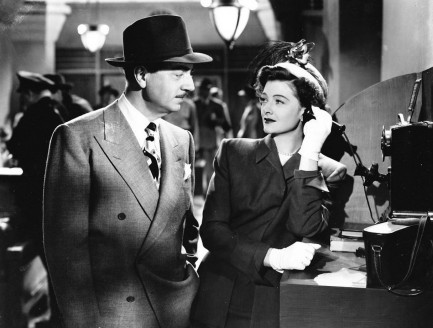
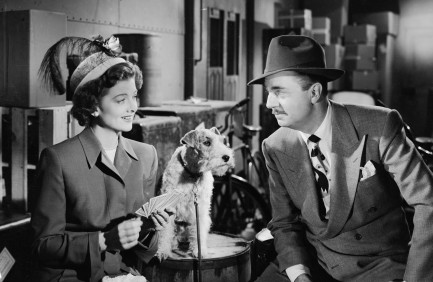
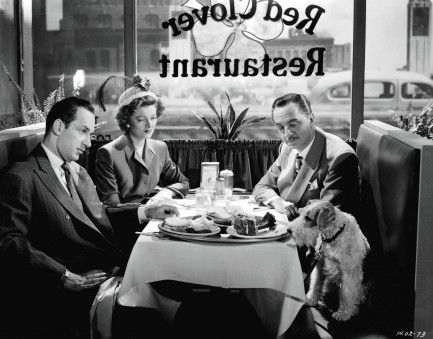
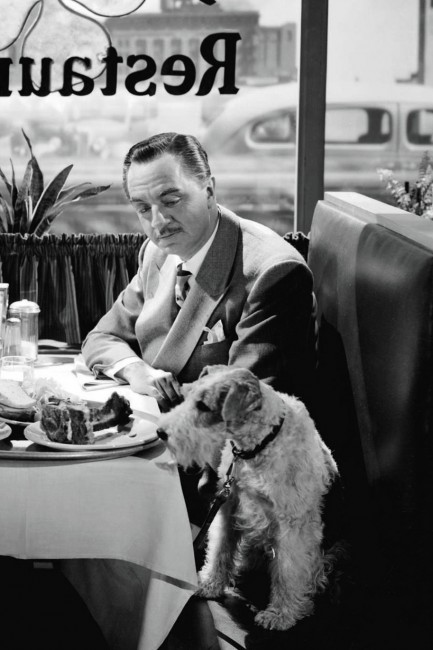
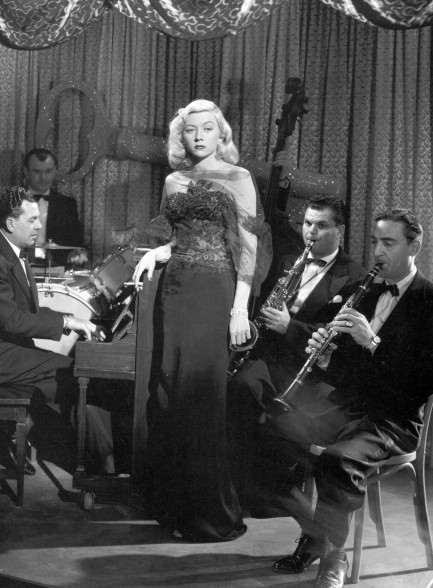
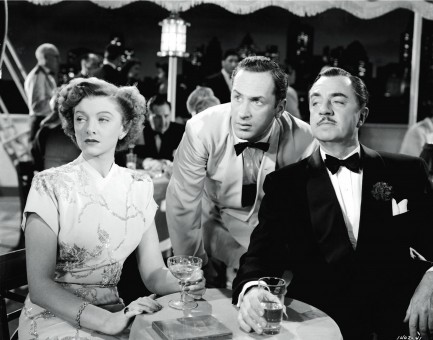
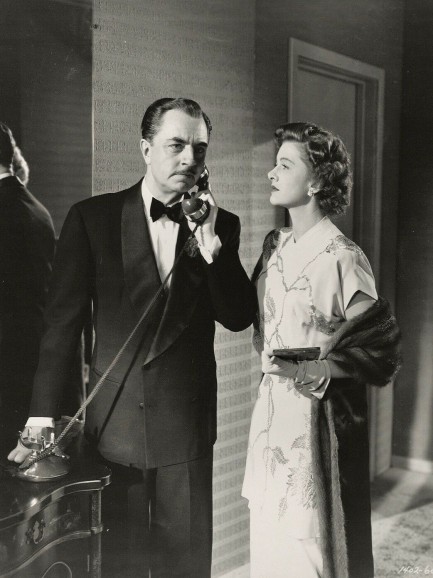
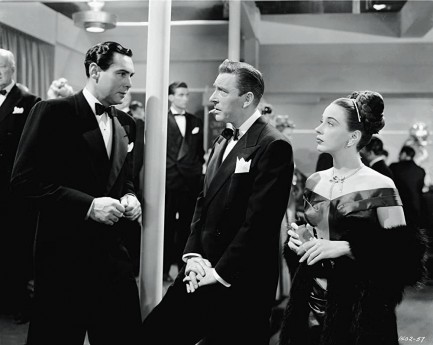
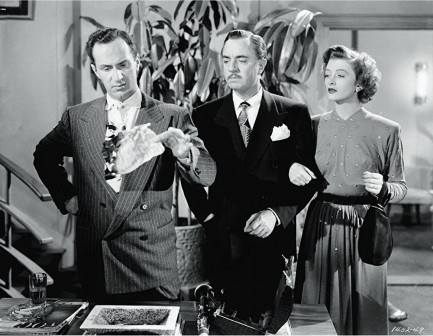
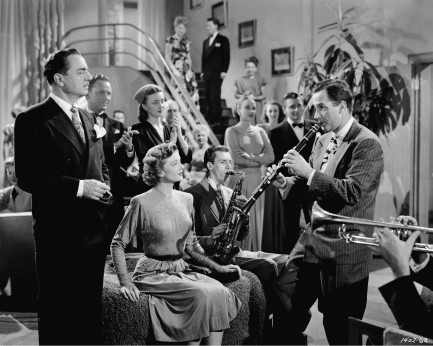
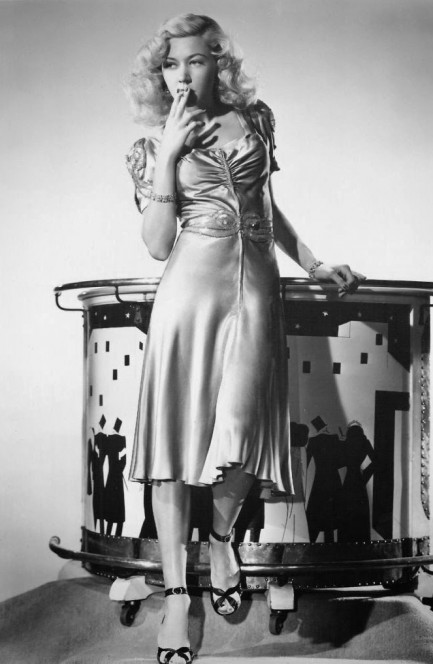
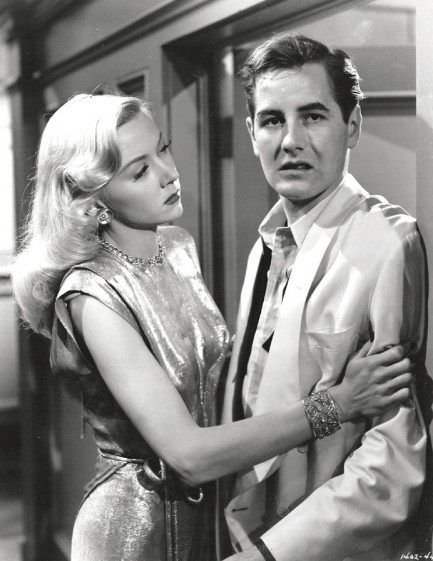
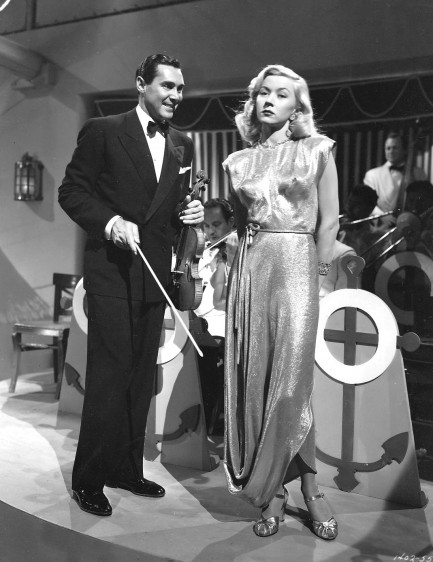
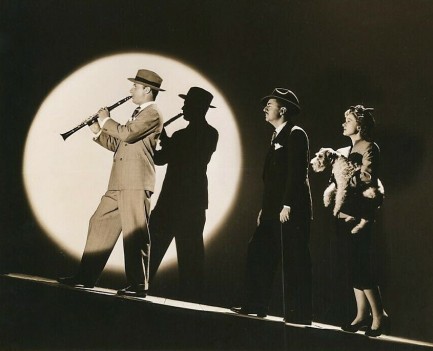












































 to aggressive hate with reactive hate. The expectation that he possess superhuman forbearance while his oppressor can be merely human removes context and wrongly demands that everybody behave identically despite their different circumstances and different locations within the spectrum of power.
to aggressive hate with reactive hate. The expectation that he possess superhuman forbearance while his oppressor can be merely human removes context and wrongly demands that everybody behave identically despite their different circumstances and different locations within the spectrum of power.





































































